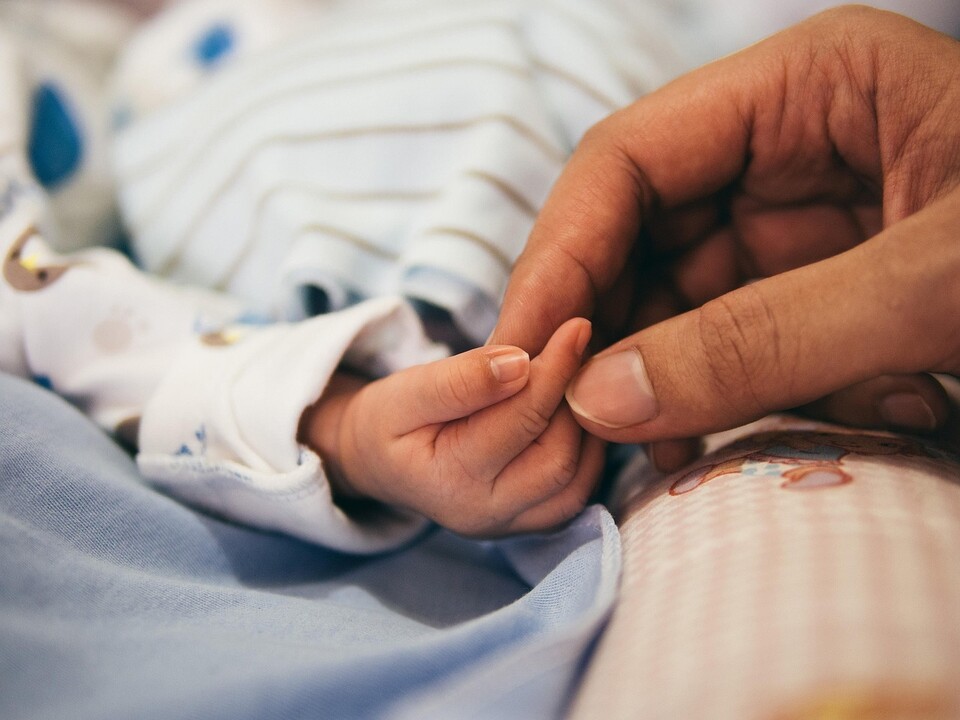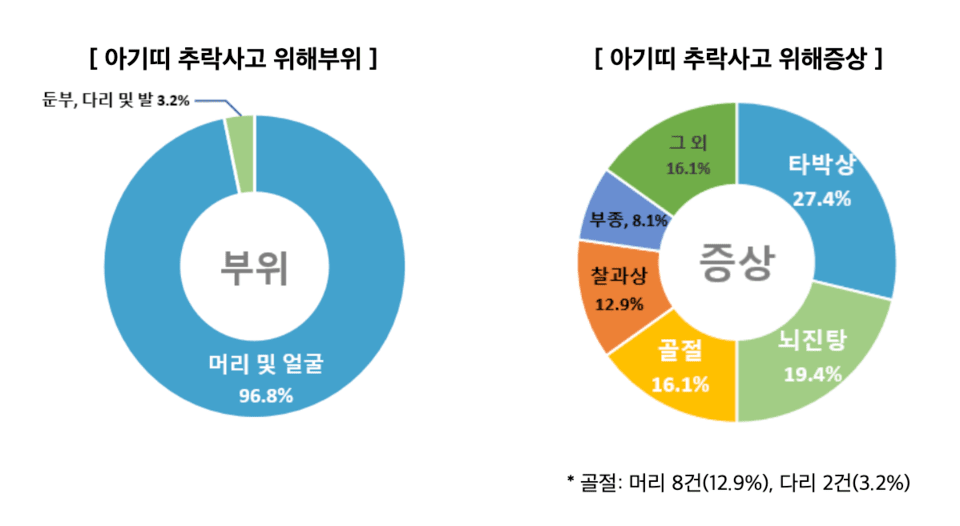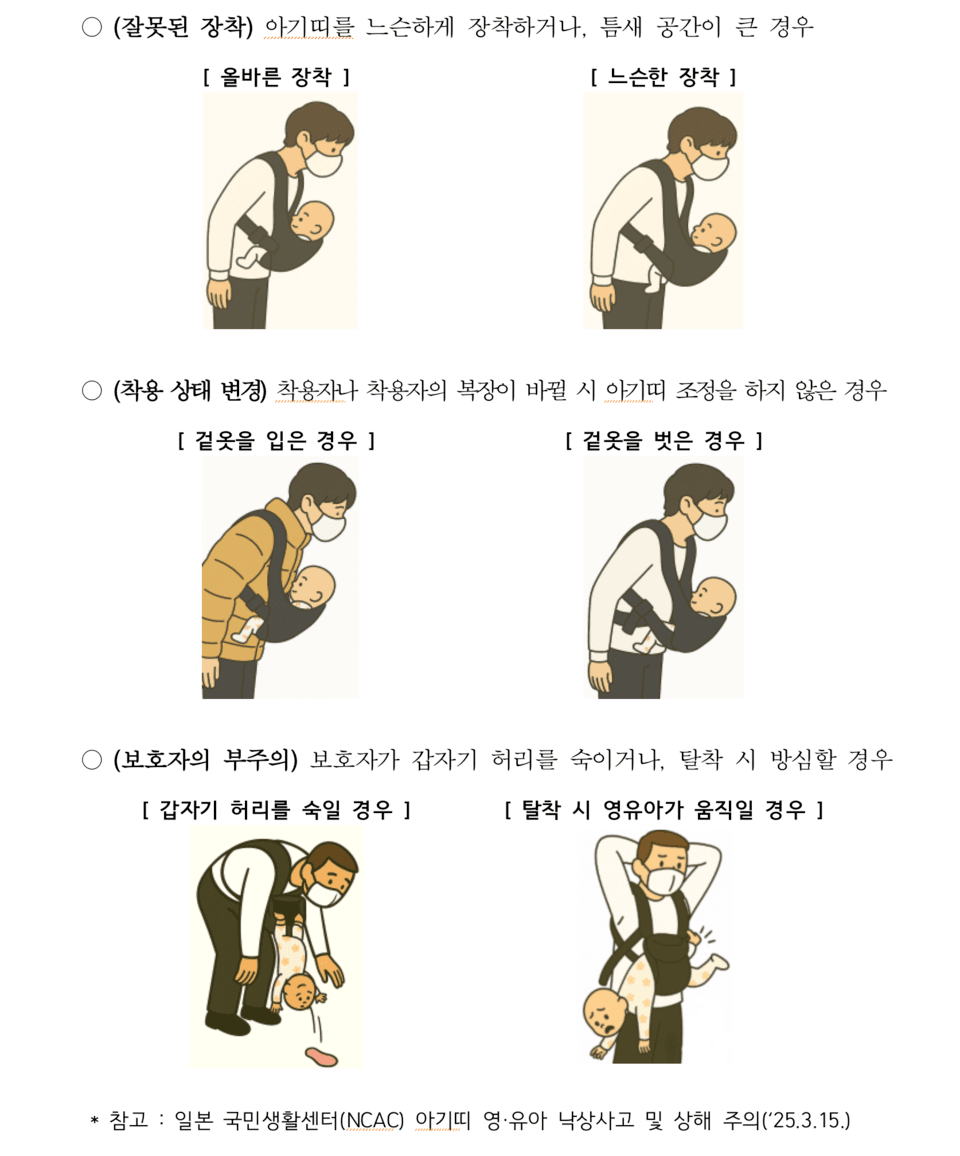The Korea Fair Trade Commission and Korea Consumer Agency have issued a consumer safety advisory on May 19 due to the continued occurrence of infant falls while using baby carriers.

Over the past five years, a total of 62 incidents related to baby carrier falls have been reported to the Korea Consumer Agency’s Consumer Injury Surveillance System (CISS). Among these, 83.9% (52 cases) involved infants under 12 months and 96.8% (60 cases) of the accidents were concentrated on the head and face areas.

The most common injury symptom was bruising at 27.4% (17 cases), followed by concussions at 19.4% (12 cases), skull fractures at 12.9% (8 cases), abrasions at 12.9% (8 cases), swelling at 8.1% (5 cases), and leg fractures at 3.2% (2 cases).
Most accidents are preventable as they are often due to “user negligence.” Experts emphasize that the key solutions are “product selection,” “familiarity with correct usage,” and “continuous monitoring while moving.”
First, it’s important to choose a verified baby carrier by checking for KC certification. As the structure differs by product, users should thoroughly familiarize themselves with the instruction manual and adjust belts and buckles to fit their body. Users should also recheck fastening when there are changes in clothing or body shape during use.

Performing safe wear practices is also important. When holding a baby, keep one hand supporting the baby at all times, and when changing positions, do so from a lower stance. Avoid sudden bending at the waist and lower your stance by bending your knees instead.
While moving, regularly check the baby’s position and posture. Because the center of gravity shifts with the infant’s movements, buckles may loosen or gaps may form.
The Korea Consumer Agency identified repeated types of incidents such as “buckles or fasteners loosening (20 cases),” “baby slipping through gaps between carrier and wearer (13 cases),” or “losing grip during wearing or removal (7 cases).” Accordingly, they emphasized that checking 2-3 times before, after wear, and during movement is effective in preventing accidents.
Parental vigilance is the key to safeguarding a child’s life. Considering that small changes in habits can prevent most accidents, “comprehensive process inspection” from product purchase to usage is required.
Precautions related to baby carrier falls
When purchasing
1. Check the quality label and purchase a KC certified baby carrier.
When wearing/removing
1. As wearing and belt adjustment methods differ by baby carrier structure, familiarize yourself with the manual and install it correctly.
2. The infant can fall from movements during wearing, so keep one hand fixed while wearing.
3. When wearing or changing the wearing posture, do so from a low stance.
While wearing
1. Refrain from sudden waist bending actions with the baby carrier on, and lower the stance by bending knees.
2. Regularly check the infant’s position and posture during movement.
3. Buckles may loosen with infant movement, so regularly readjust buckles and belts.
4. Readjust buckles and belts if the wearer or their clothing changes.